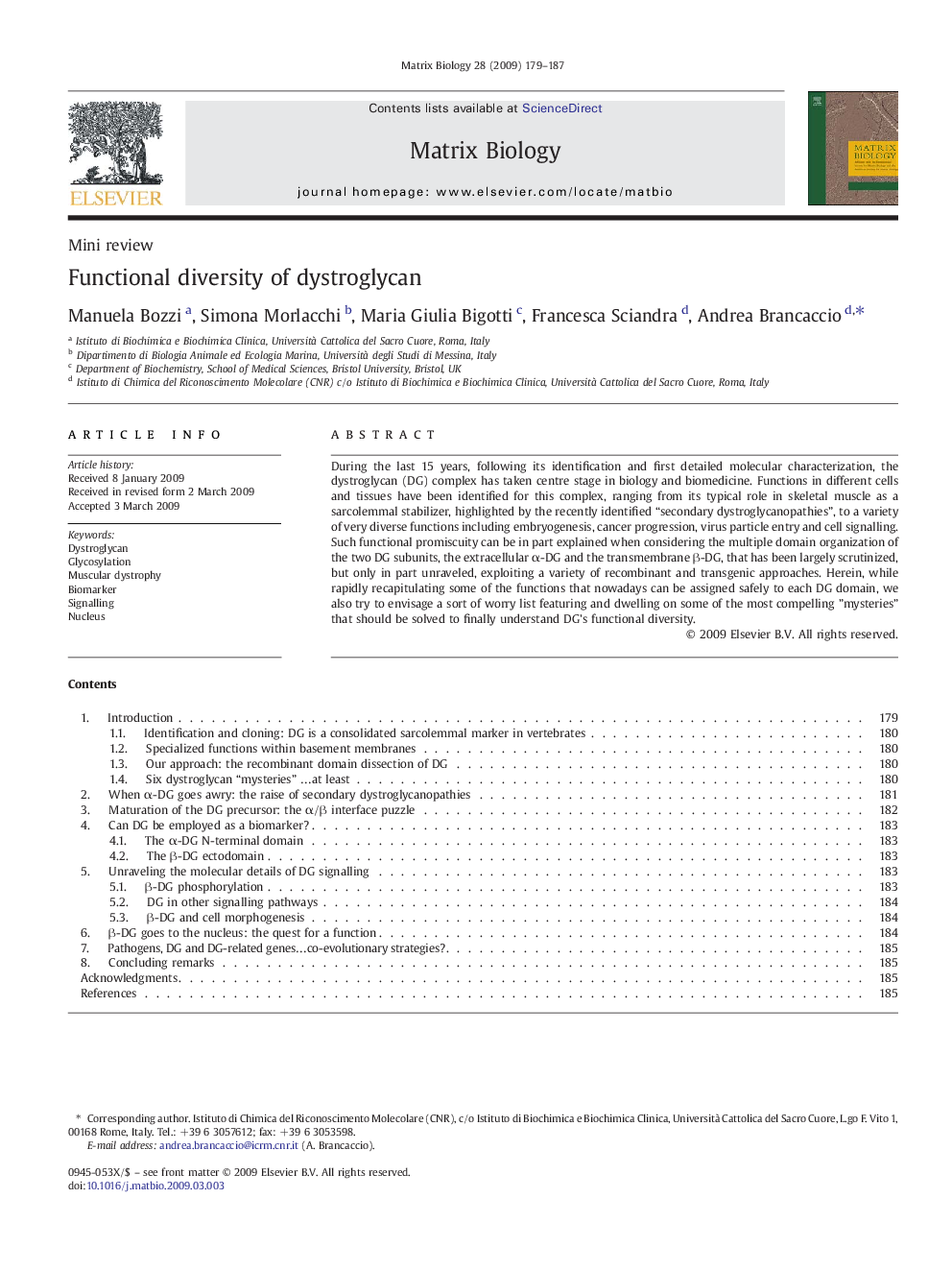| Article ID | Journal | Published Year | Pages | File Type |
|---|---|---|---|---|
| 2144983 | Matrix Biology | 2009 | 9 Pages |
During the last 15 years, following its identification and first detailed molecular characterization, the dystroglycan (DG) complex has taken centre stage in biology and biomedicine. Functions in different cells and tissues have been identified for this complex, ranging from its typical role in skeletal muscle as a sarcolemmal stabilizer, highlighted by the recently identified “secondary dystroglycanopathies”, to a variety of very diverse functions including embryogenesis, cancer progression, virus particle entry and cell signalling. Such functional promiscuity can be in part explained when considering the multiple domain organization of the two DG subunits, the extracellular α-DG and the transmembrane β-DG, that has been largely scrutinized, but only in part unraveled, exploiting a variety of recombinant and transgenic approaches. Herein, while rapidly recapitulating some of the functions that nowadays can be assigned safely to each DG domain, we also try to envisage a sort of worry list featuring and dwelling on some of the most compelling ”mysteries” that should be solved to finally understand DG's functional diversity.
